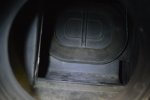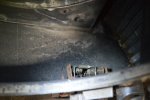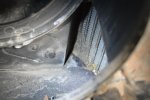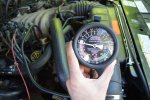DoctorRoboto
New Member
- Joined
- May 16, 2016
- Messages
- 34
- Reaction score
- 0
- Points
- 0
- Location
- Portland, OR
- Vehicle Year
- 1998
- Make / Model
- Ford
- Engine Size
- 4.0L
- Transmission
- Automatic
- My credo
- When life gives you lemons, just shut up and eat your lemons.
I'm trying to diagnose the problem in my '95 B3000. I have weak airflow in the cabin, and also no A/C. Trying to focus on airflow first.
All fan speeds sound like they're working, I hear the fan working even on the low speed, so I don't think it's the resistor. But the airflow is basically zero for any fan direction, upper, lower, defrost, whatever. If I use the heat, the truck will get quite warm.
The forums make it sound like the recirculation / fresh air door has fallen off and gotten lodged in the path of the air flow. I'm having a hard time confirming whether the recirculation door is different from the blend door. It sounds like the blend door actuator is not the problem. But are these the same - is there only one door in there?
What's the best order of events to test these different things? Sounds like it could be vacuum, blend door actuator, crop in the blower motor, and fallen recirc / "fresh air" door. Is there anything else this could be?
When I drove x-country, every once in a while we'd go over a bump and get really good airflow out of the vents, and then a few minutes later we'd be back to the same crappy airflow.
All fan speeds sound like they're working, I hear the fan working even on the low speed, so I don't think it's the resistor. But the airflow is basically zero for any fan direction, upper, lower, defrost, whatever. If I use the heat, the truck will get quite warm.
The forums make it sound like the recirculation / fresh air door has fallen off and gotten lodged in the path of the air flow. I'm having a hard time confirming whether the recirculation door is different from the blend door. It sounds like the blend door actuator is not the problem. But are these the same - is there only one door in there?
What's the best order of events to test these different things? Sounds like it could be vacuum, blend door actuator, crop in the blower motor, and fallen recirc / "fresh air" door. Is there anything else this could be?
When I drove x-country, every once in a while we'd go over a bump and get really good airflow out of the vents, and then a few minutes later we'd be back to the same crappy airflow.


















